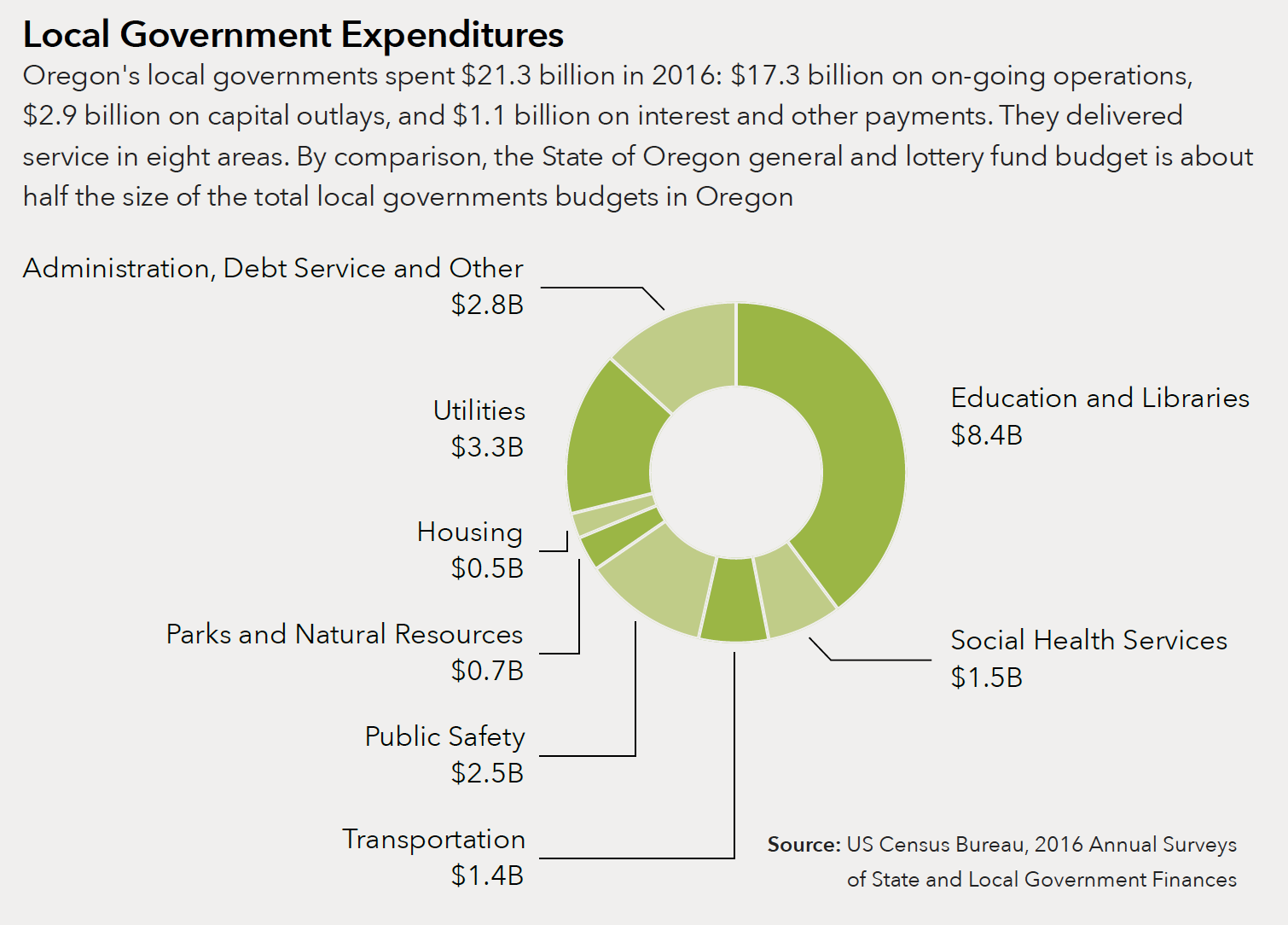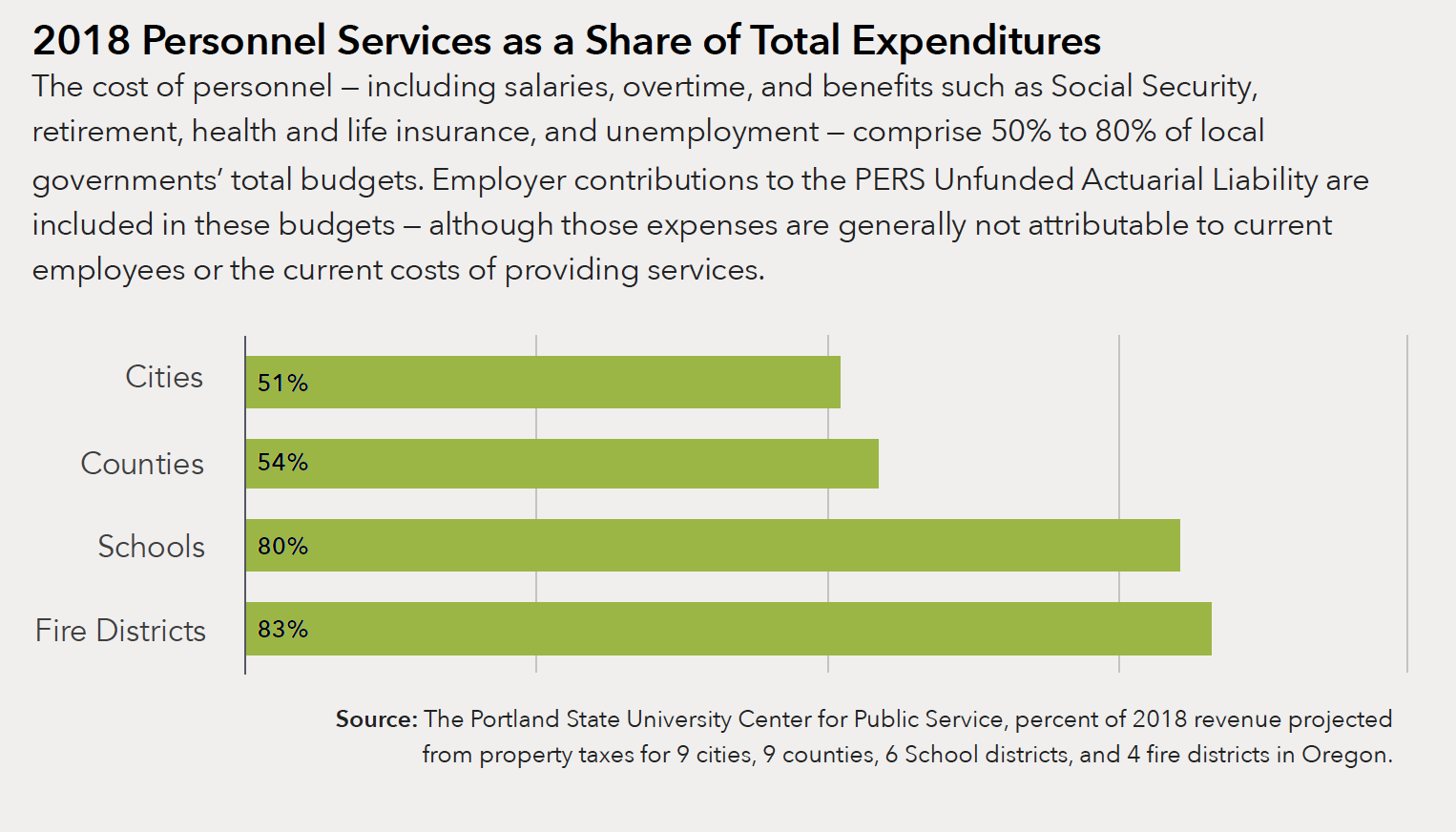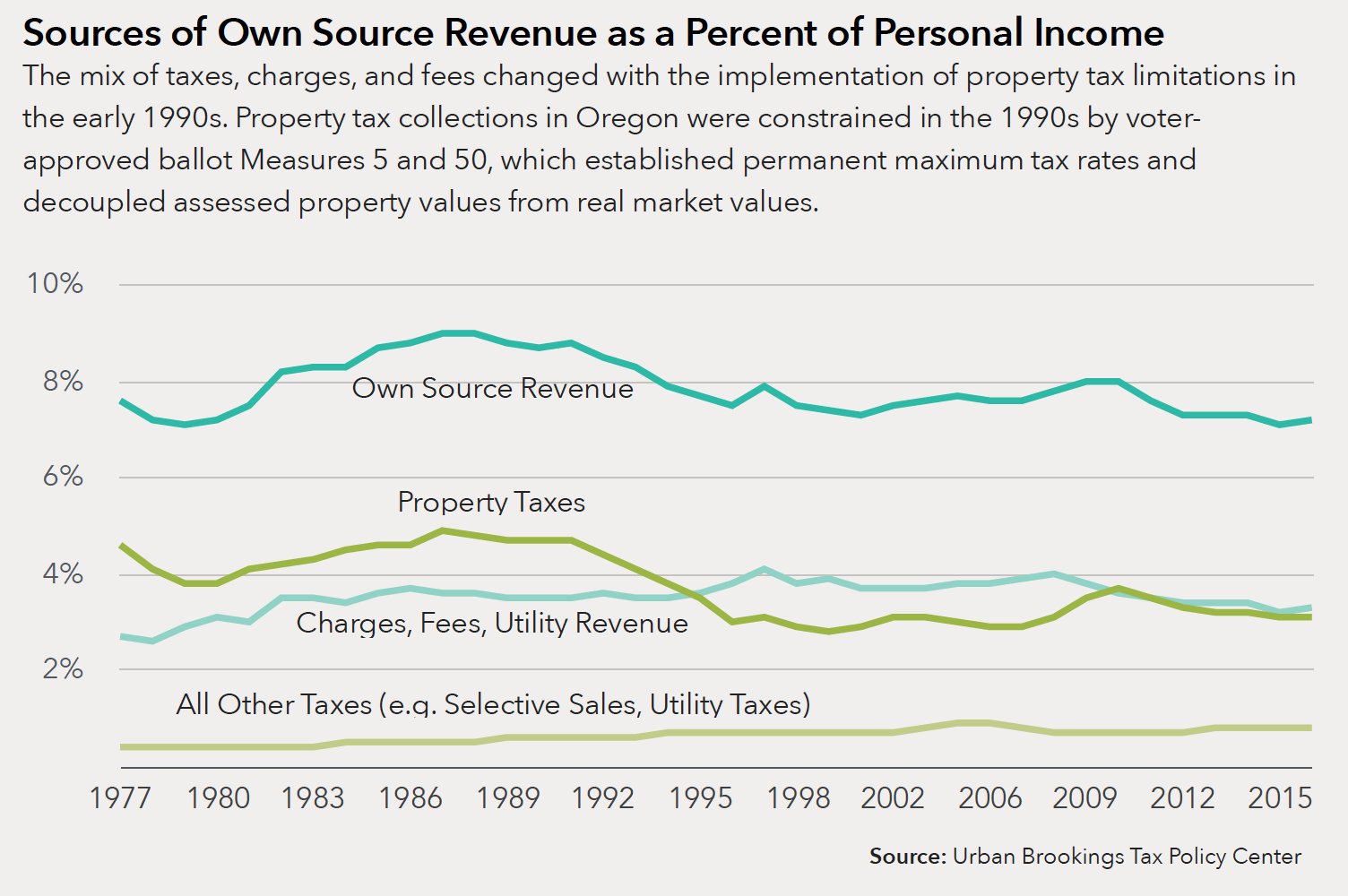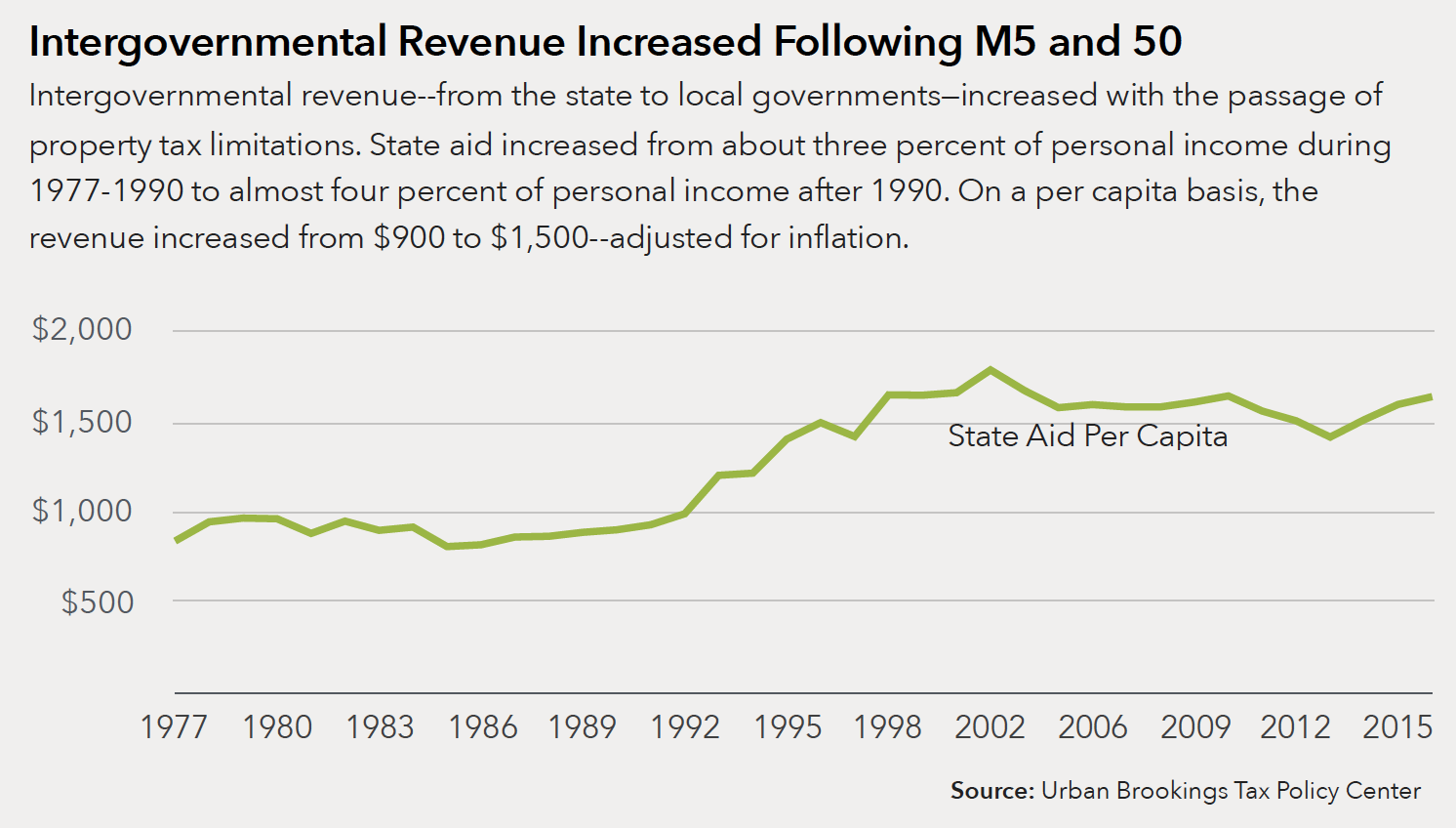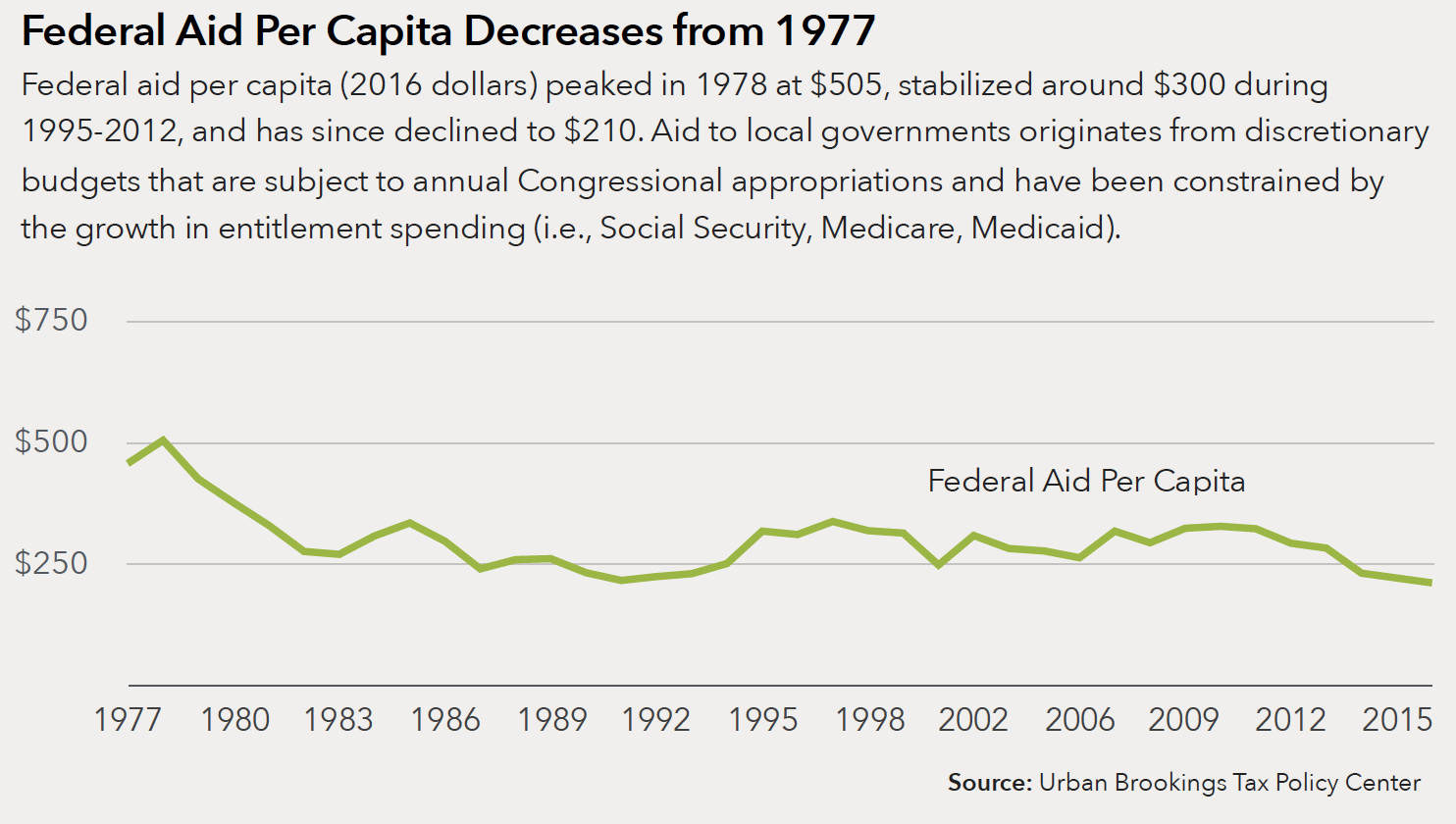Supplemental Information
What do local governments do?
Education and libraries ($8.4 billion). Local school districts and community colleges are charged with meeting the state’s ambitious 40/40/20 goal—which calls for 40 percent of young Oregonians to earn a bachelor’s degree or higher, 40 percent to earn a postsecondary credential, and 20 percent to earn no less than a high school diploma. Libraries, typically run by cities or counties, are important educational partners as is the public university system.
Utilities ($3.3 billion). Local governments —often cities or special districts — deliver water, sewer, storm water, and sanitation systems. Local governments typically operate utilities as enterprises that are separate from other, general government services. They have their own cost centers and are funded with fees paid by users—households and businesses.
Public safety ($2.5 billion). Cities, counties, and special districts operate police, fire, emergency response, 911-emergency communications, homeland security, and court systems. The functions are coordinated with systems at the federal and state level. Localities are also charged with search and rescue and animal control.
Social and health services ($1.5 billion). Local governments—typically counties—deliver services on behalf of with people with mental or physical disabilities. They provide legal, housing, and financial assistance to older Oregonians. Counties also operate primary care, dental, and public health clinics.
Transportation and land use ($1.4 billion). Local governments build, operate, and maintain neighborhood streets, arterials, and designated bridges in coordination with state and federal agencies. They develop and implement long-term, land-use plans.
Parks and natural resources ($0.7 billion). Cities, counties, and special districts build, operate, and maintain park systems across the state. Counties manage forests. And special districts manage irrigation systems and manage soil and water use.
Housing ($0.5 billion). Local governments deliver rental assistance, affordable housing program, and homeless crisis systems.
General administration ($2.8 billion). Local governments staff elected councils, commissions, and boards. They develop budgets, collect taxes and fees, and track expenditures. They run local elections and facilitate meetings to gather citizen input.
Local governments provide basic amenities to residents and improve the overall quality-of-life in a community. They sit at the foundation of regional economies. Well-functioning governments help attract households and businesses and generate economic activity. Citizen preferences, political agreements, and fiscal conditions shaped the role of Oregon's local governments.
Today, more than 1,500 agencies, governed by locally elected boards, deliver public services in Oregon. In fact, 241 municipalities, 36 counties, and 240 public school and college systems provide the bulk of the service. They are joined by more than 1,000 special districts that operate everything from regional airports and mass transit systems to irrigation networks and cemeteries.
Aside from direct employee and retiree spending, the provision of public services is tied to economic growth. Spending on highways, public safety, and education generate growth in employment, small business startups, gross state product, and other measures. Education and infrastructure investments show the most consistently positive relationships to local business activity and growth.
Consistent with these academic findings, a leading site selecting consultancy has underscored the importance of education, transportation, public safety, and infrastructure services in firm location decisions. And Oregon's largest private-sector employer, the Intel Corporation, cited a strong education system as an attractor to its Washington County, Oregon location along with abundant water supplies, reasonably priced electricity, a strong labor force, and a convenient travel distance from the Silicon Valley.
Recent research on intergenerational economic mobility highlights the importance of community characteristics— a number of which are shaped directly or indirectly by the actions of local governments. “Researchers have found that economic integration in communities — households of different incomes in close geographic proximity — is a major driver of economic mobility across generations. Additionally, short work commutes, strong social capital, the number of colleges per capita, low high school dropout rates, and low violent crime rates aided mobility. Local governments play major roles in shaping all these local conditions.

